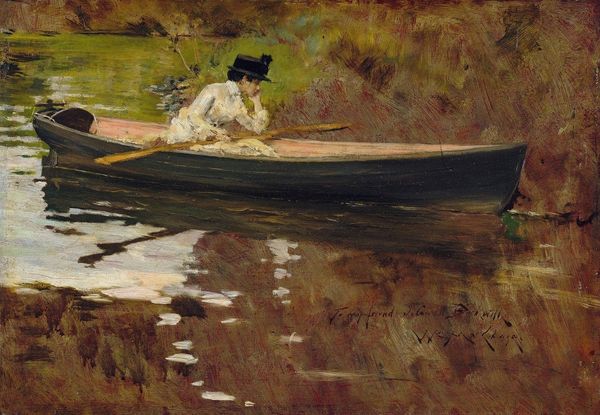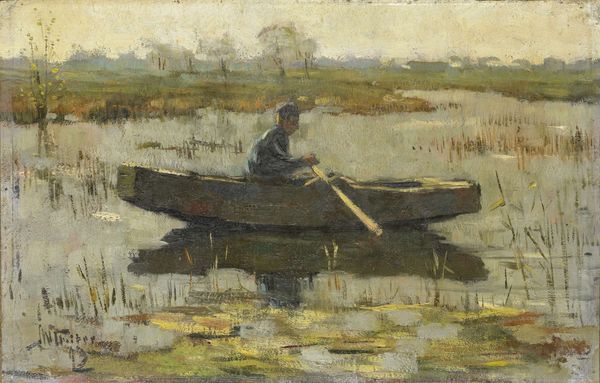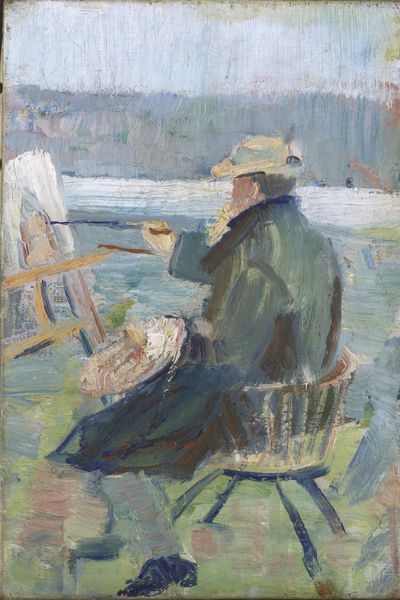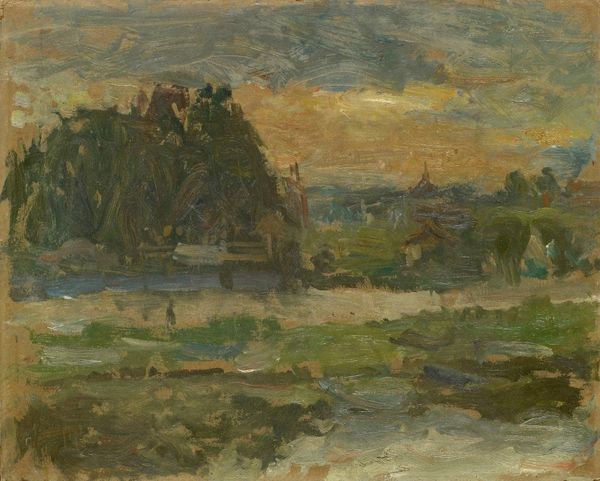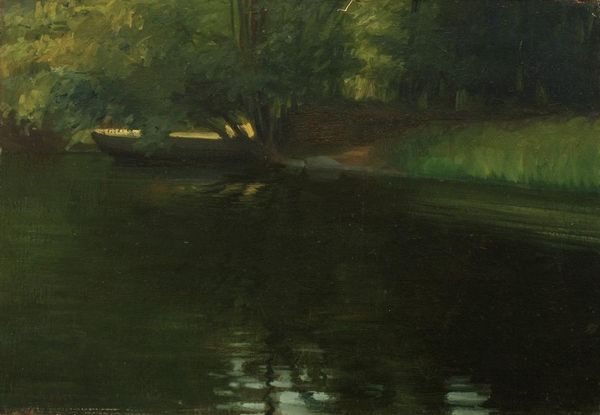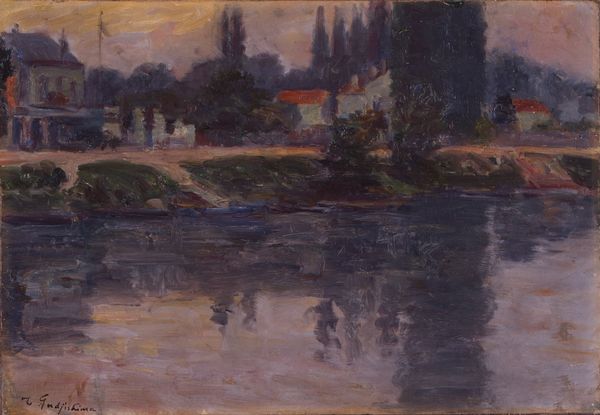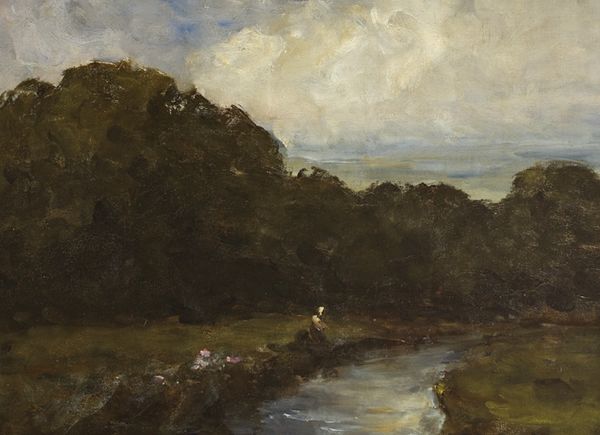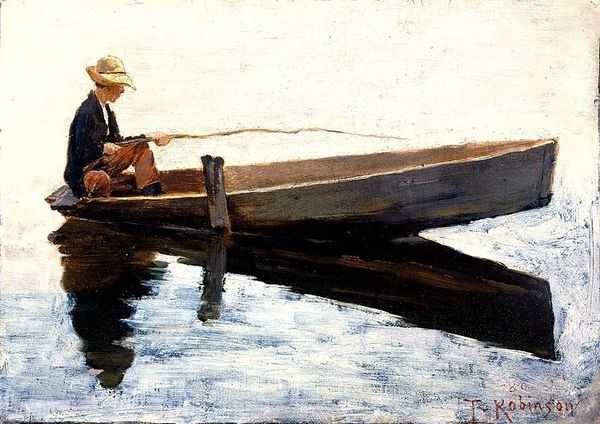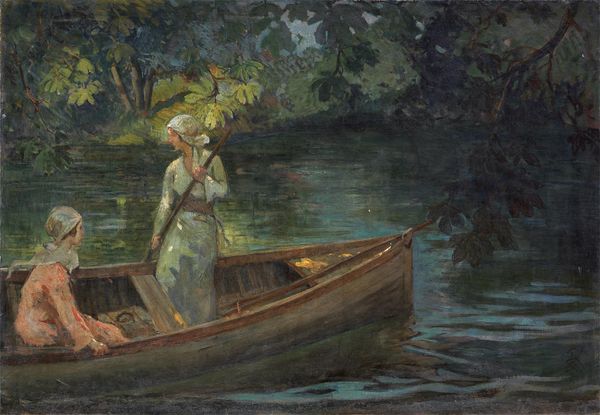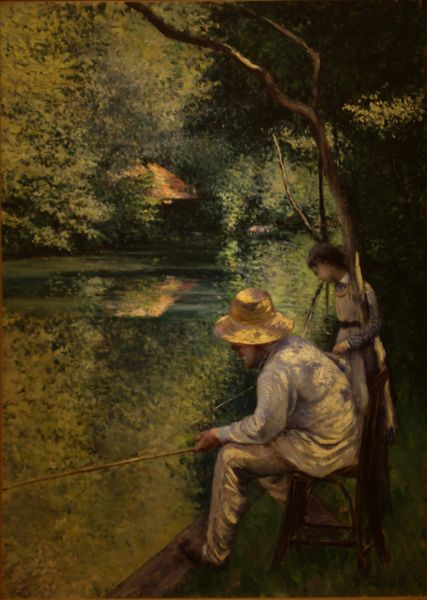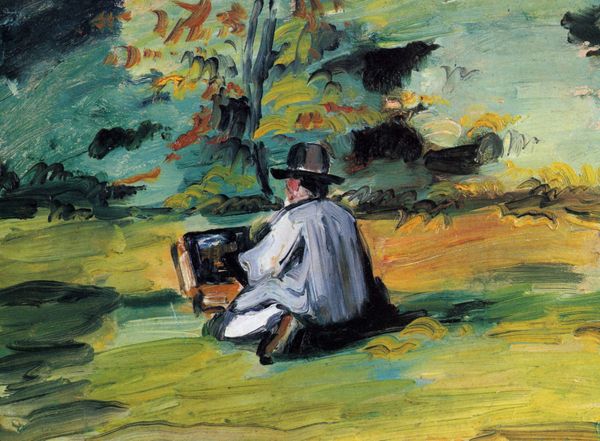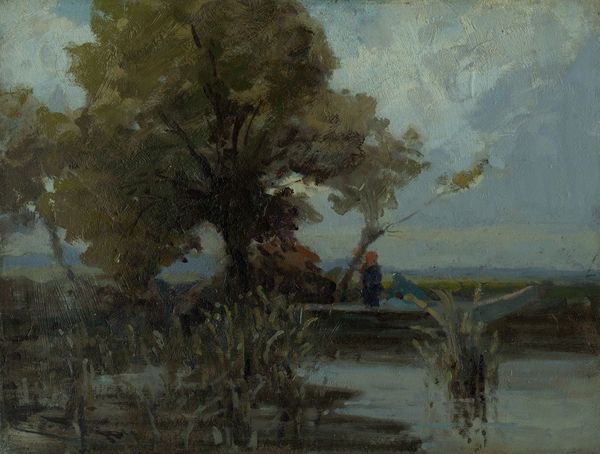
Copyright: Public domain
Curator: Maximilien Luce painted "Parizelle à la Pêche au Bas Meudon" in 1882, offering us a glimpse into leisure along the Seine. Editor: It’s an intimate scene; the impasto brushstrokes create a sense of immediacy and lived experience. There's a kind of subdued tranquility to it, don’t you think? The colors are earthy, muted, but still managing to capture light on the water. Curator: Indeed. What I find striking is the piece’s grounding in its specific time. Luce painted this en plein air, as was typical for the Impressionists, and the work depicts not just a fisherman, but a place - Bas Meudon. This location, a suburb west of Paris, would have been undergoing significant industrial expansion in the 1880s. Editor: Precisely. And so, this seemingly peaceful scene becomes charged. The fisherman isn’t simply enjoying a pastime, but is situated within a socio-economic landscape in flux. This work, intentionally or not, contrasts nature with the encroaching urbanization threatening it. Consider the perspective as well: the fisherman is cut off in the foreground, obscuring the background factories, reflecting that struggle between industrialism and simpler rural lives. Curator: Right. The artist’s choice of subject isn’t accidental either. These landscapes of the Seine’s outskirts are testaments to evolving perceptions of the ‘picturesque’ and the social dynamics of those areas. Luce's interest in capturing everyday life extended beyond the wealthy leisure classes celebrated by many impressionists. Editor: Absolutely, and thinking about class further enhances my understanding. Leisure wasn't universal at this moment in French history. How many Parisians were given the luxury of relaxing by the river? Fishing was potentially about sustenance, or an affordable, if laborious, escape. I love how the painting makes you consider this tension, while being beautifully rendered. Curator: These points beautifully illuminate how art serves as more than just visual experience, and in pieces like this, it chronicles critical shifts in our society and culture. Editor: It gives a voice to that time, a view that goes beyond aesthetic and into lived, challenging realities. A peaceful piece, yes, but so charged and potent.
Comments
No comments
Be the first to comment and join the conversation on the ultimate creative platform.
